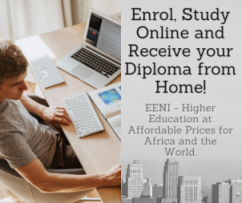Business in Serbia, Belgrade. Serbian Economy

Serbian market access and foreign trade. Agreement with Russia
- Introduction to the Republic of Serbia
- Serbian Economy
- Key sectors of the Serbian economy
- Business in Belgrade
- Serbian International Trade
- Access to the Pan-European Corridor IX
- Investment in Serbia
- Key sectors for investing
- Access to the Serbian Market
- Business Plan for Serbia
Sample:
The aims of the subject “Foreign Trade and Business in Serbia” are the following:
- To analyze the Serbian Economy and Global Trade
- To identify business opportunities in Serbia
- To explore the Serbian trade relations with the student's country
- To know the Serbian Trade Agreements
- To develop a business plan for the Serbian Market

The Subject “Foreign Trade and Business in Serbia” belongs to the following Online Programs taught by EENI Global Business School:
Masters: International Business, Foreign Trade.
 Мастер у Интернатионал Бусинесс (Serbian Students)
Мастер у Интернатионал Бусинесс (Serbian Students)
Languages:  (or
(or  Serbia
Serbia  Serbie).
Serbie).
- Credits: 1

- Duration: 1 week

International Trade and Business in Serbia.

Serbian Preferential Access and Trade Agreements:
- Serbia and the Orthodox Economic Area
- CEFTA
- Central European Initiative
- Black Sea Cooperation
- Serbia-EFTA Agreement
- Adriatic-Ionian Initiative
- Russia-Serbia Agreement
- Turkey-Serbia Agreement
- Serbia has a Free Trade Agreements with Belarus, Ukraine, and Kazakhstan
- Serbia has duty-free exports to the:
- EU-Serbia
- EU-Western Balkans
- EU-Serbia Stabilization and Association Agreement
- EU Enlargement
- The U.S.-Serbia
- EU-Serbia
- Regional Cooperation Council
- Trade Negotiations Among Developing Countries
- SICA (observer country)

- WTO (in process of accession)
- WCO
- Kyoto Convention
- Convention Harmonization of Frontier Controls of Goods
- BIC
- Chicago Convention (ICAO)
- IMO
- Convention for Safe Containers
- Istanbul Convention
- Customs Convention on Containers
- IRU
- TIR Convention
- Guidelines on Safe Load Securing for Road Transport
- COTIF Convention (Rail)
- CIM / CIT Rules

European Organizations:
- UNECE
- OSCE
- UN
- UNCTAD
- ITC
- WIPO
- WB
- WTO
- IMF
- CPLP (observer country)
The Republic of Serbia is situated in the Balkan Peninsula, in one of the most important transport routes between the EU and Asia.
- The capital of Serbia is Belgrade
- The Autonomous provinces of Serbia are Vojvodina and Kosovo and Metohija
- The official language is Serbian, and the official alphabet is Cyrillic. However, the Latin alphabet is also in use
- Borders of Serbia: Bulgaria, Romania, Hungary, Croatia, Bosnia and Herzegovina, Montenegro, Albania, and Macedonia
- Serbian Population: 7.1 million people
- Serbian Area: 883,612 km²
- Parliamentary Republic founded in 1992
Religion: The majority of the Serbian population practices Orthodox Christianity

Serbia belongs to the Orthodox Economic Area.
Belgrade (1.6 million people) is the administrative, economic, and cultural centre of the Republic of Serbia.
- Belgrade has been awarded as the city of the future for Southern Europe by the FDI Magazine
- More than 40% of the Serbian GDP is generated in Belgrade, which also has 31.4% of employed population in Serbia
Serbian Economy
- Serbia is an emerging market
- The Serbian market (7.5 million people) is the second largest in the South-eastern European region
- Serbia is the third most attractive manufacturing nation
- Serbia is the seventh most attractive foreign direct investment (FDI) destination for services among the emerging markets
- Since 2000, the Republic of Serbia has attracted 20 billion dollars in foreign direct investment
- In 2005, Serbia adopted the National Strategy for the European Union Accession (EU Enlargement)
- Serbian Currency: Dinar (RSD)
- Nominal Serbian GDP: 42,385 million dollars
- Agriculture: 12%
- Industry: 24%
- Services: 64%
- Serbian GDP per capita: 10,540 USD
- Inflation: 6.8%

International Trade of Serbia
- Total Serbian international trade: 20 billion Euros
- The main export products from Serbia are iron and steel products, nonferrous metals, textiles, fruit, and metal manufacturing
- The largest Serbian export markets are the EU, the CEFTA member states and the Central European Initiative (CEI) countries
- The main products imported from Serbia are fuels, vehicles, gas, iron and steel, and industrial machinery
- The largest Serbian suppliers are the EU, countries of the Central European Initiative (CEI) and the countries of the Central Europe, the Free Trade Agreement (CEFTA)
- Since 2000, Serbia has attracted large Foreign direct investment (FDI) flows
Serbian Trade Agreements: CEFTA, Central European Initiative, Black Sea Economic Cooperation, EFTA, EU-Western Balkans...
(c) EENI Global Business School (1995-2024)
We do not use cookies
Top of this page



